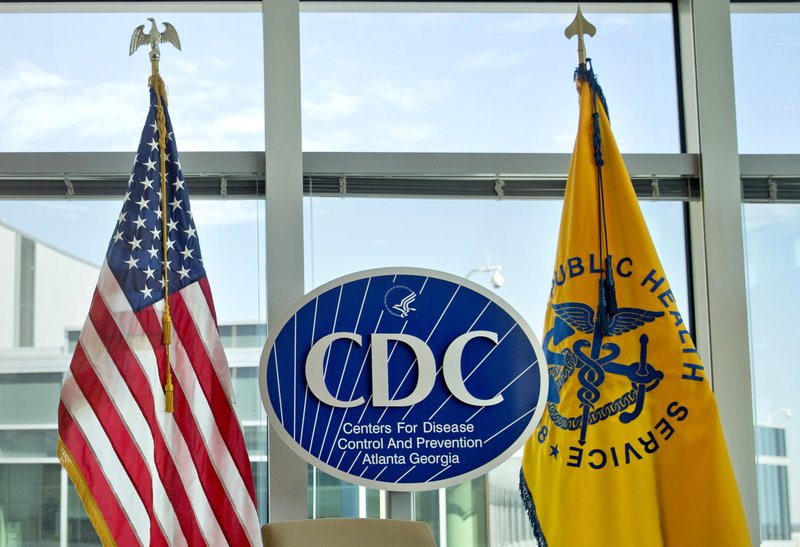WASHINGTON -- The nation saw a sharp drop in the rate of residents without health insurance during the first nine months of 2015, according to a government report released Tuesday.
Over a longer term, the uninsured rate fell to 9.1 percent from 14.4 percent in 2013, when the Patient Protection and Affordable Care Act's main coverage programs had yet to kick in.
According to the National Health Interview Survey, an ongoing research project directed by federal Centers for Disease Control and Prevention, eight states saw a significant drop last year in the number of uninsured residents.
The eight states with statistically significant coverage gains in the National Health Interview Survey are Arizona, California, Colorado, Florida, Illinois, Kentucky, Michigan and New York.
All but Florida had accepted a Medicaid expansion that is one of two major pathways to coverage under the 2010 health care law. The law's other coverage route is subsidized private insurance, available in all 50 states.
The new state numbers from the National Center for Health Statistics focus on adults ages 18-64. That's because virtually all senior citizens have coverage, and fewer than 5 percent of children and teens are uninsured.
The report didn't include estimates of the uninsured for Arkansas and 12 other states where the federal agency hadn't surveyed a sufficient number of people to provide an accurate estimate.
According to the U.S. Census Bureau's American Community Survey, released last fall, the number of nonelderly Arkansan adults who lacked insurance fell by 27 percent, from 424,024 in 2013 to 307,576 in 2014.
That was the eighth-highest percentage change among the 50 states and District of Columbia.
The census survey showed that the number of such adults who were uninsured fell in Arkansas by 6.6 percentage points, from 24.1 percent to 17.5 percent. That was the sixth-largest drop in percentage points among the states and District of Columbia.
The latest report does not analyze the reasons for the coverage gains, but independent experts say the trend is due to the health care law and an improving economy.
In Arkansas, many people gained coverage through the expansion of the state's Medicaid program in 2014 as authorized under the Affordable Care Act.
The expansion extended eligibility to adults with incomes of up to 138 percent of the federal poverty level: $16,243 for an individual, for instance, or $33,465 for a family of four.
As of Nov. 30, about 250,000 Arkansans had been approved for coverage under the program. Most of them were receiving the coverage through private, Medicaid-funded plans under the so-called private option.
In addition, 73,278 Arkansans who didn't qualify for Medicaid were enrolled as of Feb. 1 in plans offered through the state's federally run health insurance exchange, which was also created as a result of the federal health care law.
Coverage through the exchange is subsidized through federal tax credits for enrollees with incomes below 400 percent of the poverty level: $47,080 for an individual, for example, or $97,000 for a family of four.
In addition to the eight states with statistically significant coverage gains, the report named another 10 with notable reductions in the percentage of uninsured residents. However, the changes in these states did not meet the survey's test for statistical significance.
That second group included Georgia, Idaho, Indiana, Louisiana, Mississippi, New Hampshire, New Mexico, North Carolina, Oklahoma and Rhode Island.
Kentucky led the way among the states with statistically significant reductions in the number of uninsured residents, with a drop of 6.5 percentage points. The state's new Republican governor, Matt Bevin, ran as a strong critic of President Barack Obama's signature law and is now grappling with how to scale back his state's involvement.
Arizona had the second-biggest reduction, a drop of 5.9 percentage points. New York followed, with a reduction of 5.6 percentage points.
The health care's law big coverage expansion got under way in 2014, and since then the nation's uninsured rate has fallen to a historically low level.
The law offers subsidized private health insurance through online markets like healthcare.gov for people who don't have access to employer-based coverage. That's coupled with a Medicaid expansion aimed at low-income adults, now accepted by 31 states. Virtually all Americans are required to have coverage or risk paying fines to the IRS.
Even with Obama's law, nearly 29 million people were still uninsured in the nine months from January to September of 2015. That includes an estimated 11 million immigrants without legal permission to be in the country, who are not entitled to coverage.
Information for this article was contributed by Ricardo Alonso-Zaldivar of The Associated Press and by Andy Davis of the Arkansas Democrat-Gazette.
A Section on 02/10/2016
